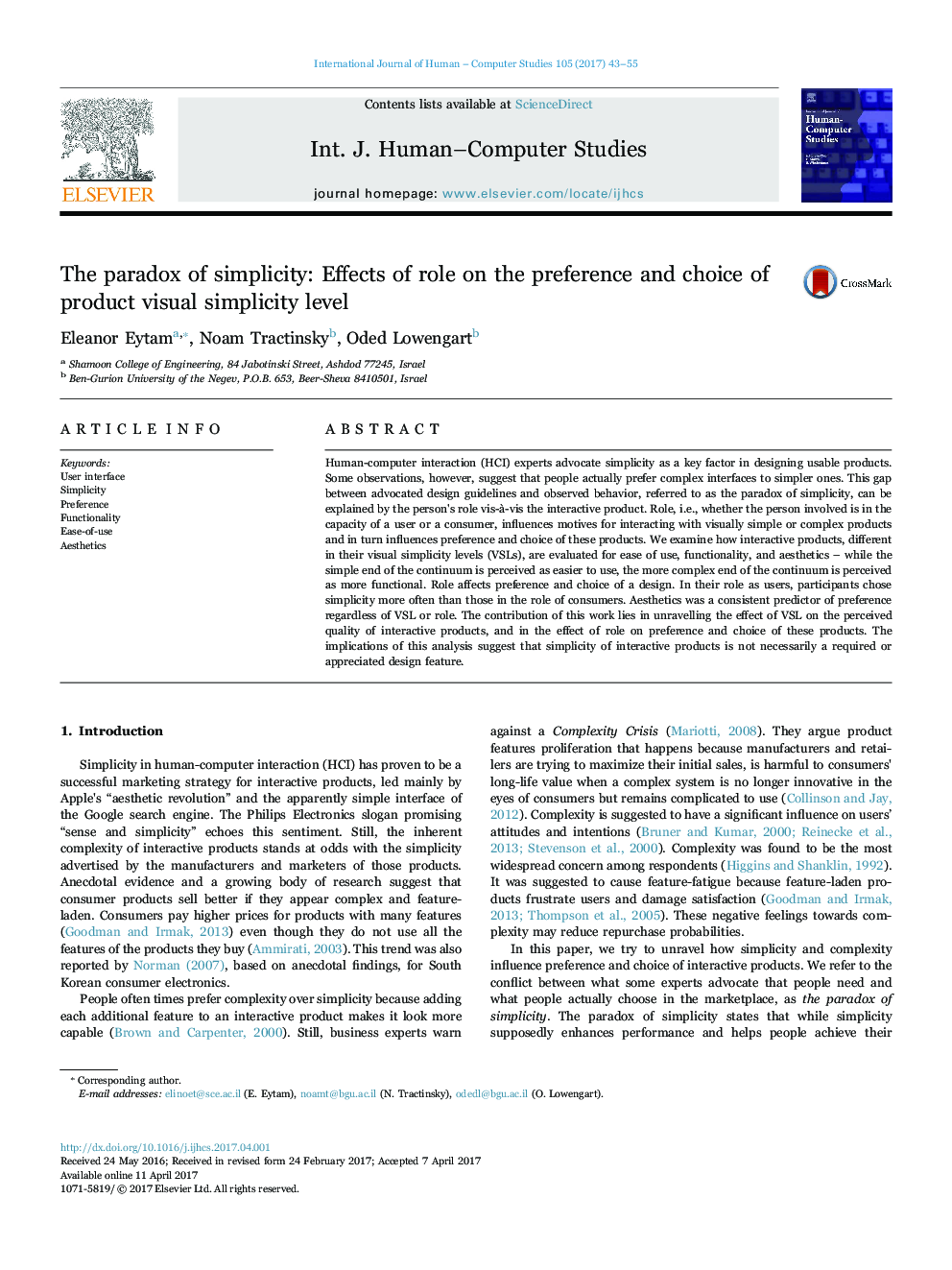| Article ID | Journal | Published Year | Pages | File Type |
|---|---|---|---|---|
| 4945774 | International Journal of Human-Computer Studies | 2017 | 13 Pages |
Abstract
Human-computer interaction (HCI) experts advocate simplicity as a key factor in designing usable products. Some observations, however, suggest that people actually prefer complex interfaces to simpler ones. This gap between advocated design guidelines and observed behavior, referred to as the paradox of simplicity, can be explained by the person's role vis-Ã -vis the interactive product. Role, i.e., whether the person involved is in the capacity of a user or a consumer, influences motives for interacting with visually simple or complex products and in turn influences preference and choice of these products. We examine how interactive products, different in their visual simplicity levels (VSLs), are evaluated for ease of use, functionality, and aesthetics - while the simple end of the continuum is perceived as easier to use, the more complex end of the continuum is perceived as more functional. Role affects preference and choice of a design. In their role as users, participants chose simplicity more often than those in the role of consumers. Aesthetics was a consistent predictor of preference regardless of VSL or role. The contribution of this work lies in unravelling the effect of VSL on the perceived quality of interactive products, and in the effect of role on preference and choice of these products. The implications of this analysis suggest that simplicity of interactive products is not necessarily a required or appreciated design feature.
Related Topics
Physical Sciences and Engineering
Computer Science
Artificial Intelligence
Authors
Eleanor Eytam, Noam Tractinsky, Oded Lowengart,
